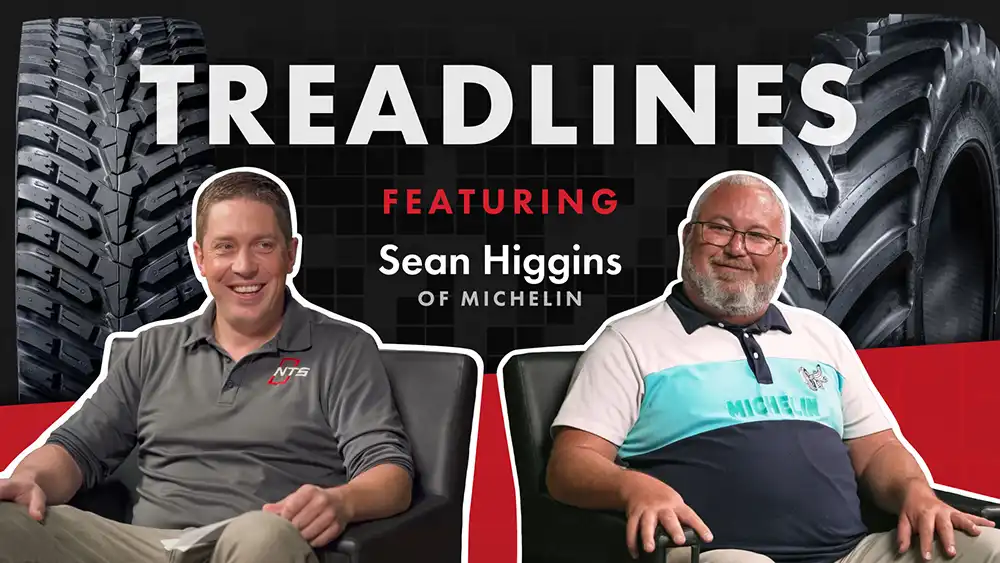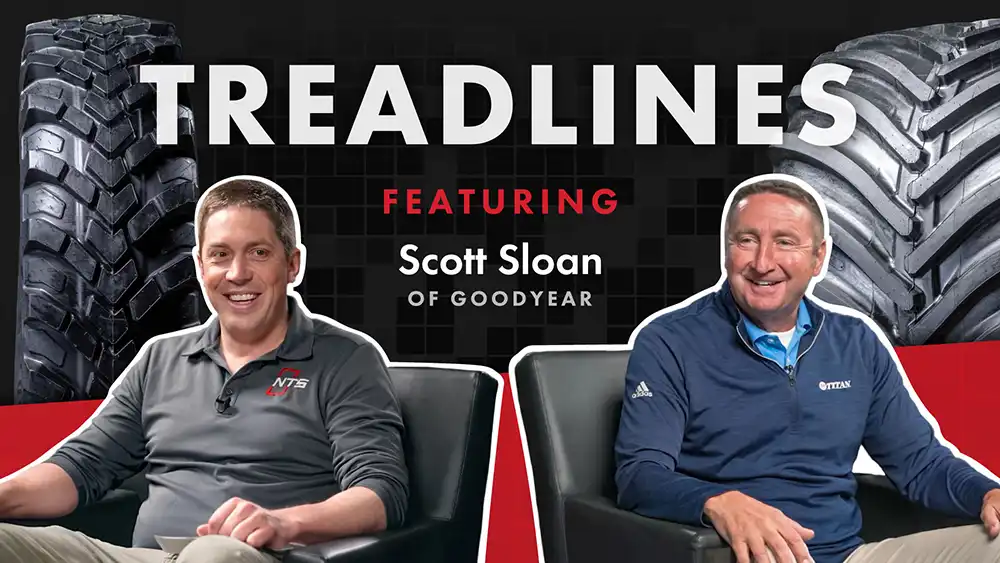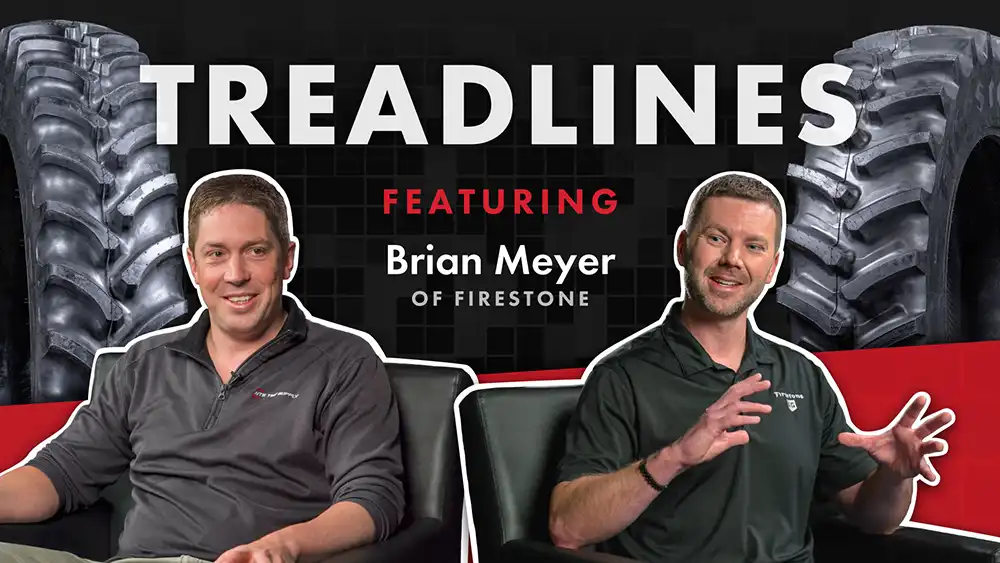Controlled traffic farming (CTF) pops up now and then on soil conference schedules, in extension education bulletins, and in the pages of national farm publications. But do you know anyone who has actually implemented the practice on his or her farm? NTS Tire Supply recently spoke with Manitoba farmer Adam Gurr, who began using CTF on his farm in 2012.

A Permanent Solution to Soil Compaction?
In our interview, Gurr suggested that CTF is a permanent solution to soil compaction—a problem recognized by farmers around the world.
“Growers become aware of soil compaction because they see the impact on crop growth. And then you have extension folks getting questions on it and giving talks and even whole conferences dedicated to the topic as well. But what I find interesting is that producers seem to be aware of it [compaction] and concerned about it. For me, CTF is a permanent solution to it. You don't even have to have the discussion anymore. But in spite of that, adoption rates [for CTF] are still really low. I just find it interesting that there's a lot of time and energy devoted to the topic. There's conferences around the world on CTF, and then there's associations dedicated to it. But when it comes down to it, some growers would just rather rip their fields every year and spend loads of money doing that. Just go CTF and then you don't have to.”
The idea behind controlled traffic farming is simple: Confine all your wheel (or track) traffic to designated tramlines within a field. In a typical CTF situation, this will cut the trafficked area of a field down to 10–20 percent from 80 percent or more. This allows for better water infiltration, root development, and nutrient absorption—an overall improvement in soil conditions—across the non-trafficked portions of the field.


Two Signs Lead Gurr to Consider Compaction’s Harm to His Soil
Gurr switched his 5,000-acre farm to controlled traffic farming in 2012. Observations he made following several wet growing seasons led him to implement the practice on his farm.
“We had some particularly wet seasons, and started to notice that there was compaction showing up where I thought it shouldn't be. Whenever we talked about compaction, I was like, it’s not an issue in western Canada because we get freeze/thaw cycles. Well, we had some really wet, waterlogged soils and you could really observe the traffic patterns from the previous year.”
A couple observations in particular stood out to Gurr, including: “Crop yellowing in the traffic lines, which was indicating to me that there was a lack of oxygen there. It would show up quicker in waterlogged soils because there was less pore space. So then, you’re going to get more nitrogen loss there. The crops aren’t growing as well. Sometimes even after the yellowing would disappear, you would see the crop would be shorter in those areas.”
Getting Started with Controlled Traffic Farming
For Gurr’s farm, switching to controlled traffic farming wasn’t difficult. “At the time we had equipment that made adopting at least a seasonal controlled traffic system very easy. We didn't have to do any modifications. We were already running RTK so we could repeat our traffic lines, and it was just a matter of finding the same line in the drill and the sprayer. And then from there it was just sort of a no brainer for us to start controlling harvester traffic.”
In order to implement CTF, your implements and heads have to be multiples of each other (40-ft head, 80-ft drill, 120-ft sprayer boom, etc.). CTF experts suggest working backward from your header width, as that can sometimes be the odd duck out. Gurr recounted experiences with heads that were not quite as advertised by the manufacturer, say a 40-foot head is actually 39 feet wide in reality.
And you also have to think about your machine width as well. On his farm, Gurr runs mostly track machines. As he pointed out, you’re putting down narrower tracks overall with track machines compared to large dual tire setups, so you’re further minimizing the amount of ground you’re compacting.
What if your equipment isn’t all multiples of each other? As Gurr suggested,
“You don't have to go all in. Having everything on exactly the same spacing . . . that's something you could maybe work towards. If you trade out your fleet of equipment every couple of years anyway, you just sort of plan your purchases over time to achieve that.”
Data: Are Numbers a Barrier to Acceptance of CTF?
According to Gurr, one of the reasons more farmers don’t jump on CTF is the lack of hard data spanning multiple studies.
“Theoretically, it made sense to me. But I don't have any hard data to say you need to go this way and you're going to make an extra fifty dollars an acre. You can go and test CTF soils and you see the improvements in some really important properties. But to connect that to yield, it's just a tough, tough thing to simulate.”
A quick survey of controlled traffic farming across the internet yields a few data points. Research out of Western Australia has shown a 25% decrease in fuel use with CTF and no-till farming. For his master’s degree program, Gurr conducted a water infiltration study on his own farm in 2016. In trafficked areas, it took 1,800 seconds (or a half hour) to infiltrate 1 inch of water. In areas of the field that had gone untouched by wheel traffic, the process took only 82 seconds.
A Final Word on CTF
Since nearly everything in agriculture is sold or promoted based on how many more bushels will be busting the bins, plus the perceived hurdles of getting started with CTF, it’s no wonder the practice has been slow to catch on. “It's not a new idea. In the U.S., they were researching it back in the fifties,” said Gurr. “In areas where absorption rates are high, it's driven by extension. They're really promoting it. They're running clinics and information sessions and mobilizing people to research it. Manufacturers get involved with it, in Australia and parts of Europe, where there is a higher adoption rate.”
Additional Resources
Agritruth Research: Agritruth’s Ongoing Research on Controlled Traffic Farming
From Down Under: A Comprehensive Overview of Controlled Traffic Farming
About Adam Gurr
Adam Gurr owns and operates a 5,000-acre small grains farm near Brandon, Manitoba. In 2015 he started Agritruth Research Inc., which conducts field-scale agronomic research trials under contract to companies in the agriculture industry. Adam has a diploma and degree in Agronomy from the University of Manitoba and a Master’s degree in Agronomy from Iowa State University.
Join the Compaction Fight with NTS Tire Supply
At NTS Tire Supply, we know the value of taking steps to fight soil compaction. If you’ve read our PTK blog before, you’re already familiar with the benefits you see when you mitigate soil compaction, from higher yields to better fuel economy and faster working speeds. We hope you’ve enjoyed this brief look into one of the more unique farming systems out there. You can also take steps today to help get compaction under control on your farm.

Mount Larger Tires
The larger a tire’s air chamber, the more “support” it provides to carry the weight of your machine. You can increase your tires’ size by width, height, and aspect ratio. Larger tires will put significantly more footprint on the ground.
Read More: The Most Popular Tire Strategies for Boosting Machine Performance

Upgrade to VF Tires
VF radials put more tire—a larger footprint—on the ground thanks to their ability to run at lower air pressures and with more sidewall flex. A larger footprint delivers more traction and flotation at the same time.
Read More: Larger Footprints Save Time, Fuel, and Fight Compaction

Invest in CTIS
With a PTG central tire inflation system, you’re in total control of your tire pressures. So what? Well, for starters, you’ll be able to set your tire pressures for the job at hand, whether that’s high for blasting down the road or at optimum low pressures for maximum traction and flotation in the field.
Learn More: Transform Your Tractor with a Central Tire Inflation System
Our tire experts can help you minimize compaction and improve equipment performance on your farm with the strategies we’ve listed above. Run with the right tires, wheels, and air pressure and you’ll Drive Your Farm Forward.

.png)
.jpg)



















